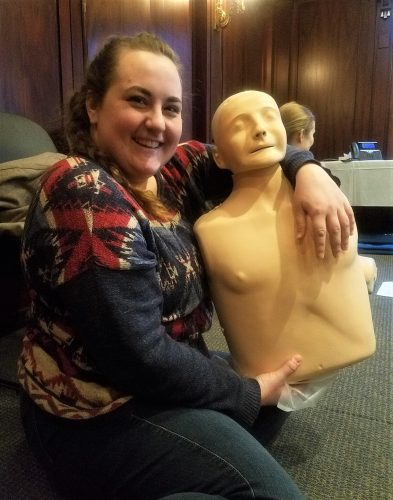Becoming a First Responder

From Visitor Services Coordinator Talia Makowsky. To read more posts from Talia, click here.
The first few minutes of a medical emergency are crucial. A person’s chance of recovery and survival can be decided in how fast people respond to the incident. The state of Maryland recognizes the importance of having a first responder on the scene, and so requires facilities that have an AED (or Automatic External Defibrillator) to also train people in CPR and AED skills. Here at the Museum, people are the most important part of what we do, so we chose to do a CPR and AED training with the majority of our staff. We learned a lot in the afternoon we spent together, and I wanted to share some ways the Museum is working to keep guests, volunteers, and staff safe.
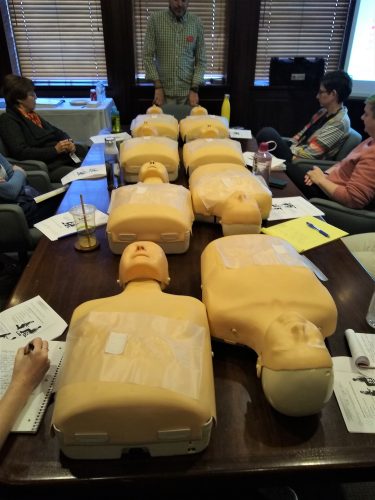
After our CPR and AED training, eight staff members or volunteers received their certification from the American Red Cross. This included many of the people who are up at the front on a regular basis, as well as some people who do most of their work in back office. A few additional staff also plan to get their certification, so there’s a good chance when you’re in the Museum that you’re near someone who has been trained to be a first responder.
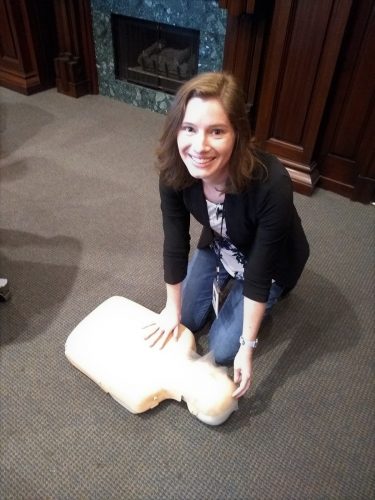
Being a first responder means being the first person on the scene of a medical emergency. We were taught how to check a scene for safety and what steps to take when caring for someone. We learned how to direct helpers to retrieve the AED or call 911. If you’re ever in the Museum and witness a medical emergency, always alert a staff member! Even if they aren’t trained, they know who to call to respond, and can help retrieve safety equipment. Once you alert a staff member, the best way to support the Museum is by staying calm and not panicking. Any emergency situation only becomes worse when others start to panic.
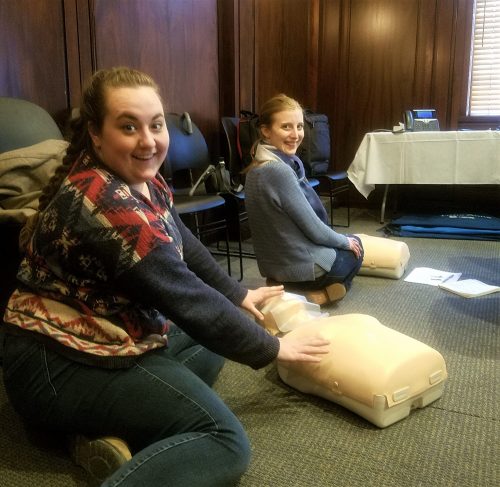
If you offer to help a first responder, you may be directed to collect the AED. Our machine is located near the public restrooms, in a white box that is attached to the wall. This machine monitors the heart rate of a person having a cardiac attack and can give an electrical shock if the machine detects no heart rhythm or an irregular heart rhythm. This, along with chest compressions and rescue breaths done during CPR, are done to keep a person alive long enough for emergency medical services (EMS) to arrive. Even though the staff have received this training, we still want to get EMS on the scene as soon as possible, as they can provide advanced treatment and care for a person in need.
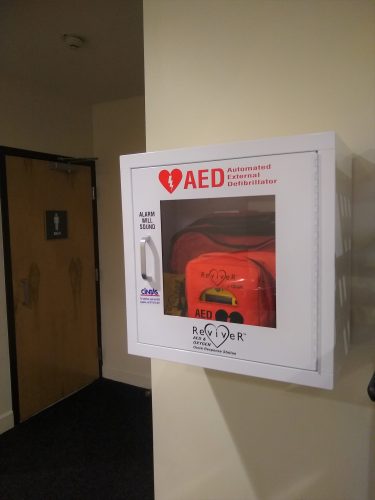
At the Museum, we also have first aid kits throughout the building and in the Lloyd Street Synagogue. Staff members can help provide these supplies if you’re ever in need. We have other ways of keeping people safe, through our fire alarm systems, security systems, and through prevention work such as trainings and plan-making done by the staff. We hope to always provide a safe experience to our guests, volunteers, and staff, which is why we try to plan for every situation and update our protocols every year. If you ever have a question about our safety measures, please reach out anytime to my email. I’m glad to learn more about your needs and how the Museum can meet them.
